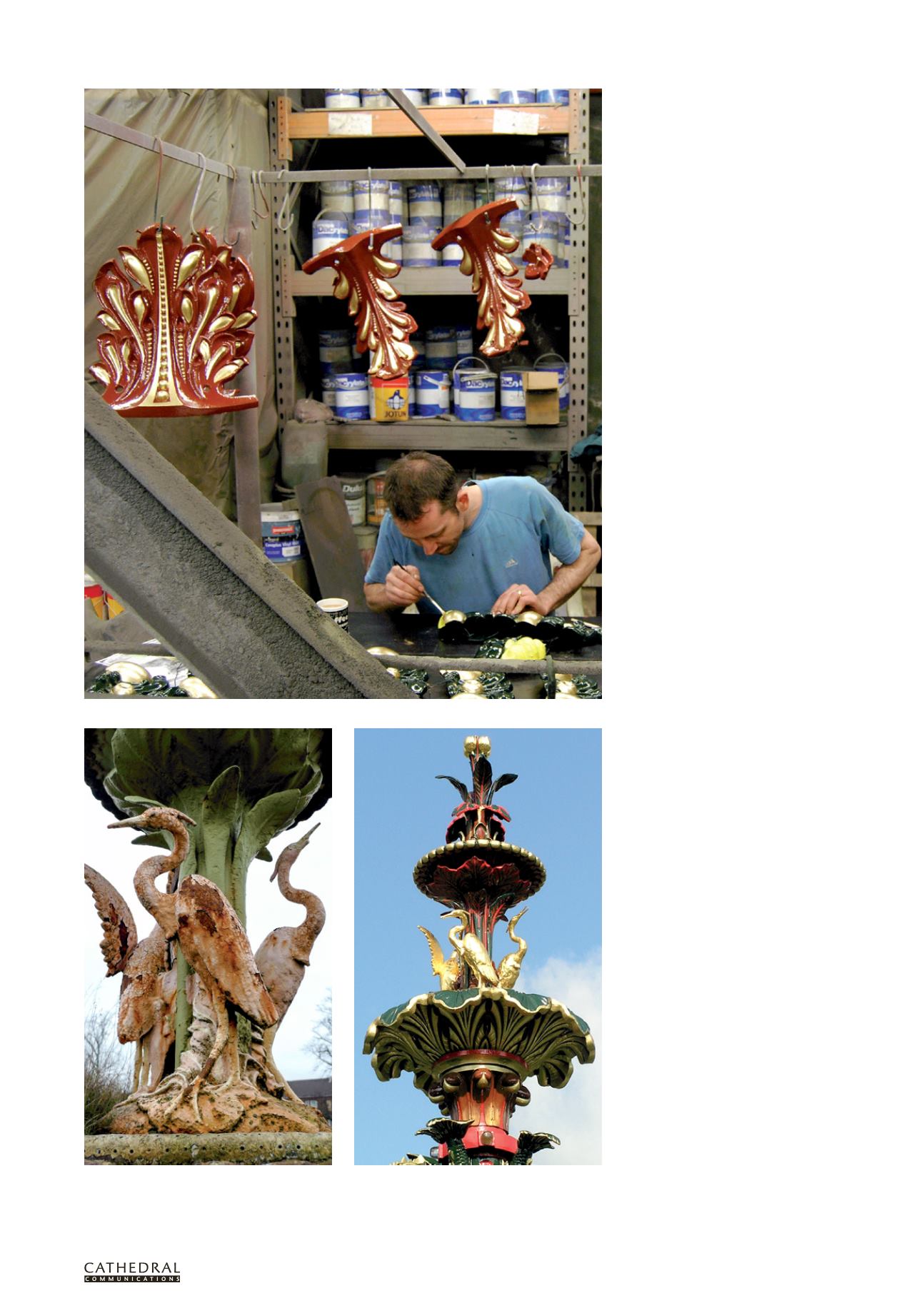

T W E N T Y T H I R D E D I T I O N
T H E B U I L D I N G C O N S E R VAT I O N D I R E C T O R Y 2 0 1 6
1 2 9
3.4
STRUCTURE & FABR I C :
EXTERNAL WORKS
furnish several fascinating case studies but
the focus of this article is the re-creation of
the original colour scheme designed by Daniel
Cottier (1837–1891), an artist and designer
born in Glasgow.
Cottier is best known for his fine stained
and painted glass work, as well as interior
decoration. He worked with architects such
as Alexander ‘Greek’ Thomson and William
Leiper, who in turn often commissioned work
from the top ornamental iron-founders of the
day, George Smith & Co’s Sun Foundry and
Walter MacFarlane’s Saracen Foundry.
Research
The restoration of the fountain took over
a year. However, prior to the physical
restoration the team had to undertake
extensive research into the history of the
fountain and its colour scheme. This included
referring to the rather frustrating descriptions
detailed in the inauguration booklet of 1868:
The decorations of the central fountain,
like those of the iron gateways,
lamps and railings, are of the richest
character. The main fountain is, at
the base, toned with deep sombre
tints appropriate to iron structures
and gradually rises into a series of
variegated bronzes that bring out the
respective ornamental parts of the
structure with additional effect. The
base of the foundation, wherever the
structure would allow of its appropriate
introduction, has had piquancy added
to it by small bits of brilliant colouring
which take away entirely any feeling of
heaviness, and look very pretty.
Consultant conservation engineer James
Mitchell took particular interest in finding the
right colour, paint and glazing solution for the
fountain, given the importance of the original
colour scheme. Daniel Lea, production
manager with Lost Art, led the restoration
works and spent time experimenting to find
the best approach to applying the complex
coatings. The process was long and arduous
and required over 100 paint samples and
hours of testing supplemented by an initial
paint study carried out by Historic Scotland
in 2006.
Restoration
The fountain was dismantled and moved
to a conservation workshop, where a
long period of repair and preparation
of individual pieces was needed before
the final coatings could be applied.
Due to the condition of the structure it
was essential to clean it back to bare metal.
There is much debate about the best way to
clean and (equally importantly) seal bared
cast iron. In the 19th century new iron
castings were often doused with linseed
oil while still very hot, which prevented
‘gingering’ or flash rusting before it could
be painted. As the paints were then largely
linseed oil-based the first coat of red
lead suffused nicely with the oiled iron
surface. This practice fell out of favour as
coatings became more ‘sophisticated’.
Today, when coatings are removed by
Repainting work under way in the conservation workshop
To ensure that the original colour scheme was re-created as accurately as possible, the herons and the tulip to the
top of the structure were finished in gold leaf. This should retain its finish for longer than gold paints, which tend to
discolour over time due to the effects of UV light.
















